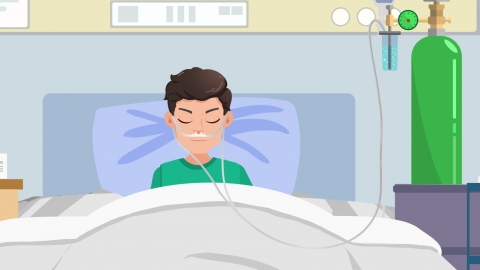Is it necessary to continuously receive oxygen therapy when blood oxygen levels are between 88% and 90%?
Blood oxygen should refer to blood oxygen saturation. If an individual's arterial blood oxygen saturation is between 88% and 90%, but there are no abnormal symptoms, continuous oxygen inhalation may not be necessary. However, if there are accompanying abnormal symptoms such as chest pain or rapid breathing, continuous oxygen therapy might be required. If the venous blood oxygen saturation is between 88% and 90%, oxygen inhalation is generally not needed. If any abnormalities occur, it is recommended to seek timely medical attention. Detailed analysis is as follows:

The normal range for arterial oxygen saturation is 95% to 98%. When arterial oxygen saturation drops to between 88% and 90%, it may indicate hypoxia. If a patient's oxygen saturation remains stable between 88% and 90% without significant discomfort, doctors may develop an individualized treatment plan based on specific circumstances, which may not necessarily include continuous oxygen therapy.
If an individual's oxygen saturation suddenly drops to between 88% and 90%, accompanied by acute symptoms such as chest pain, rapid breathing, or confusion, immediate oxygen administration and further evaluation may be necessary to quickly improve oxygen supply and prevent deterioration. Once the underlying cause is controlled and oxygen saturation returns to the normal range, oxygen therapy can be gradually reduced or discontinued.
The normal range for venous oxygen saturation is 64% to 88%. Therefore, an oxygen saturation level of 88% to 90% is considered to be at the higher end of the normal range for venous oxygen saturation, and oxygen therapy is generally not required.
In daily life, maintaining a healthy lifestyle, improving dietary habits, engaging in appropriate physical exercise, enhancing physical fitness, and reducing the risk of illness are recommended.





